Fowlis Wester Pictish Stones
Pictish Stones

Fowlis Wester is a tiny village that is in an area heaving with ancient sites: cup-and-ring marked rocky outcrops, hill forts, stone circles, standing stones, Pictish sculpted stones, Roman forts, and more.
In the centre of the village used to stand a tall Pictish cross-slab. To save it from the weather, it has been taken into the local church (along with another cross and several fragments of another stone) and replaced with a fairly horrible replica. Inside the church, the lighting is terrible (that's my excuse for the poor quality of several of these photographs!) and it is very difficult to make out the carvings. On one side is a cross, and on the other are several horsemen, a crescent-and-V-rod and a double-circle-and-Z-rod.
A second, smaller cross-slab lives in the same church. The top-left and top-right quadrants of the slab seem to contain monsters that look like a cross between a dog and an eel. The one in the top-right has hold of a person by the head.
According to Elizabeth Sutherland in In Search of the Picts this is illustrative of the Jonah and the Whale story; in the top-left corner the whale has swallowed Jonah leaving his sword and shield--in the top-right corner the whale is disgorging him.
Below the arms of the cross are two seated figures. These are Paul (on the left) and Antony (on the right) -- two early Christian hermits and saints. They supposedly lived alone in the desert in the early years of Christianity, meeting just before Paul's death at the age of 113 years. The story is that Paul fed on and was clothed by date palms, seen before and behind the figure on the left; a spirit (seen behind the figure on the right) revealed to Antony the presence of Paul in the desert.
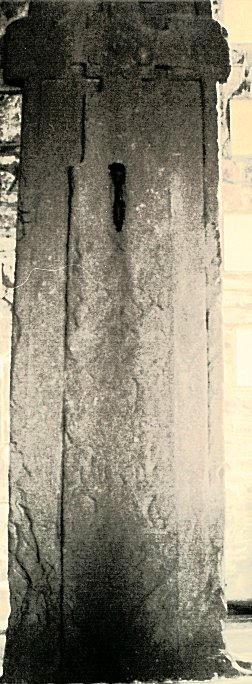
1/22 The "cross" face of the class II cross-slab.
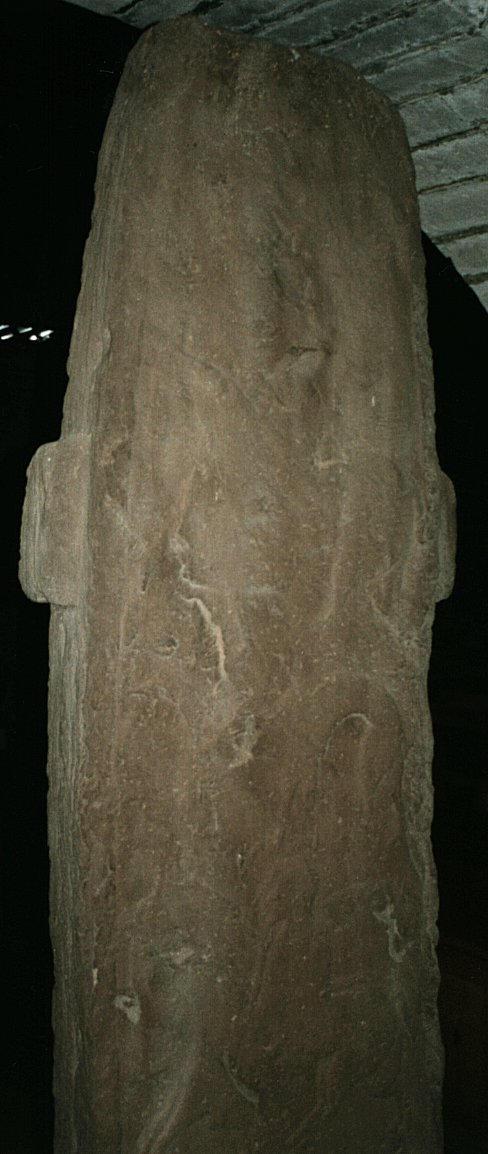
2/22 The top of the "back" face.
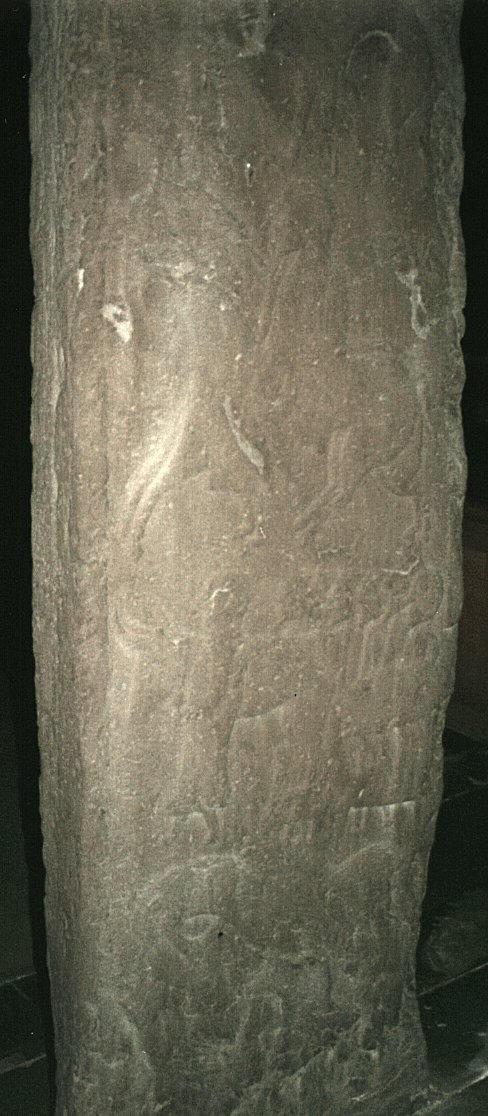
3/22 The base of the "back" face.
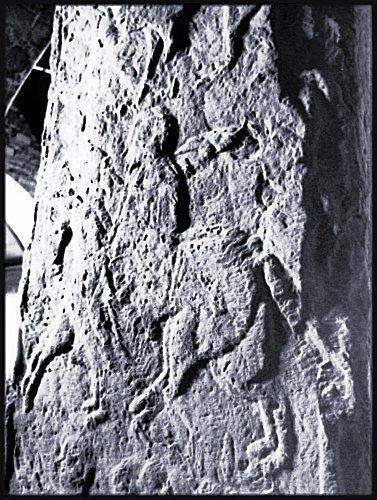
4/22 A pair of horseman riding abreast. (If you think there is only one horseman, try counting the horse's legs.) One of them carries a hawk, but that is pretty much imposible to see in this poor picture.

5/22 In the top half, a man in a long robe leads a cow with a bell around its neck. Behind follow six other men, two with shields. Below is (left) a crescent-and-V-rod and (right) a bird - possibly a goose or eagle. Below these, and almost impossible to make out, is a man being eaten by a beast.
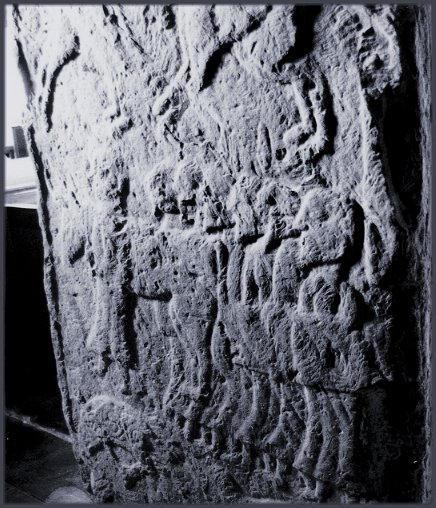
6/22 Another view of the cow and followers.
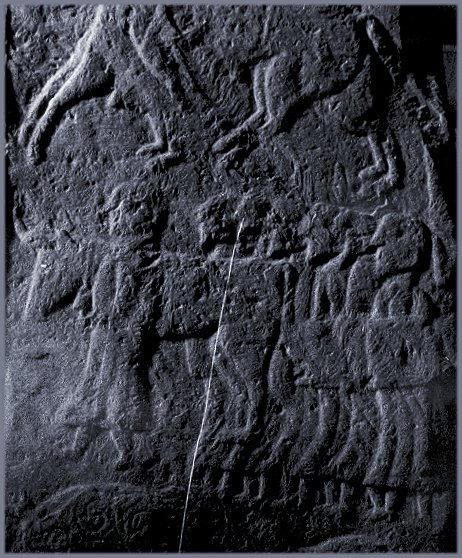
7/22 A clearer view of the cow procession. Apologies for the scratch on the negative!
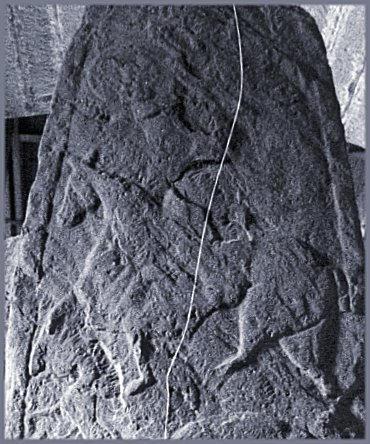
8/22 At the top of the stone is a double-disc-and-Z-rod; the left-hand disc can be seen. Below is a horseman.

9/22 From the top: double-disc, horseman and beast.
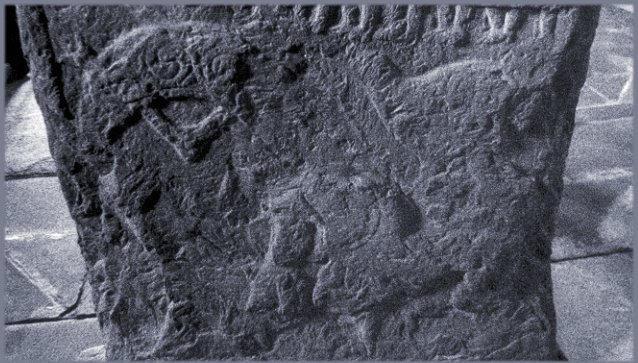
10/22 Another view of the crescent, bird and (slightly clearer) man-eating monster.
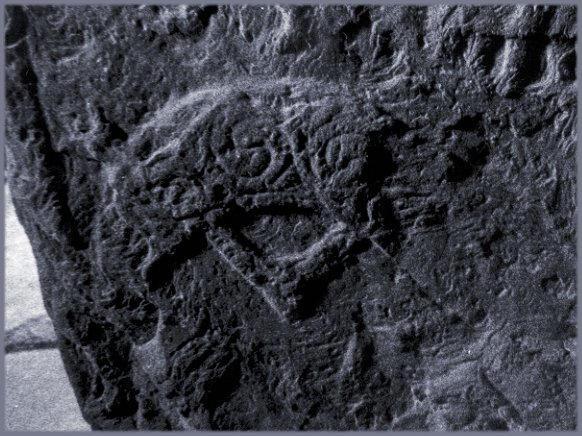
11/22 Close-up of the crescent-and-V-rod.

12/22 At the top is a horseman; below is a beast - possibly a dog; at the bottom, a pair of horsemen.
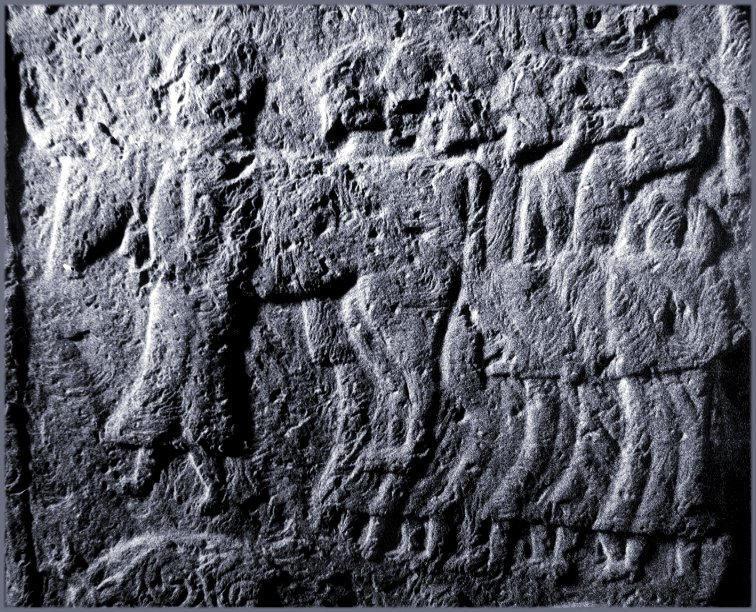
13/22 Detail of the cow-procession.
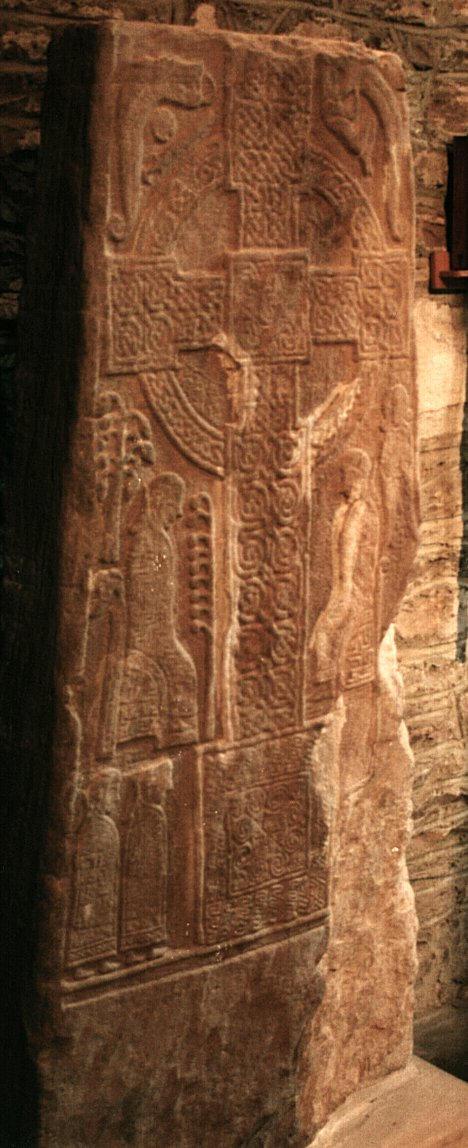
14/22 A smaller class III cross-slab hidden away in Fowlis Wester church.
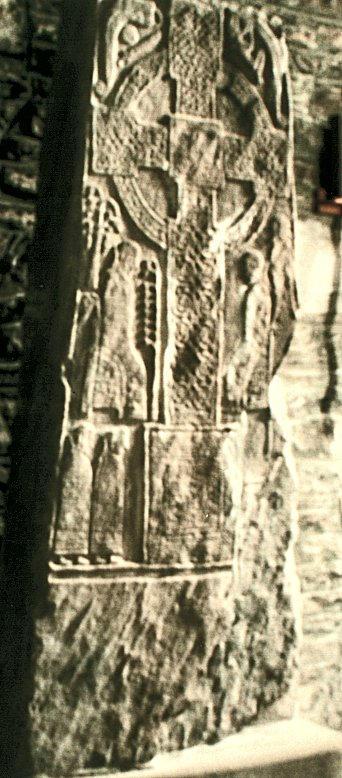
15/22 Different lighting to bring out the shadows.
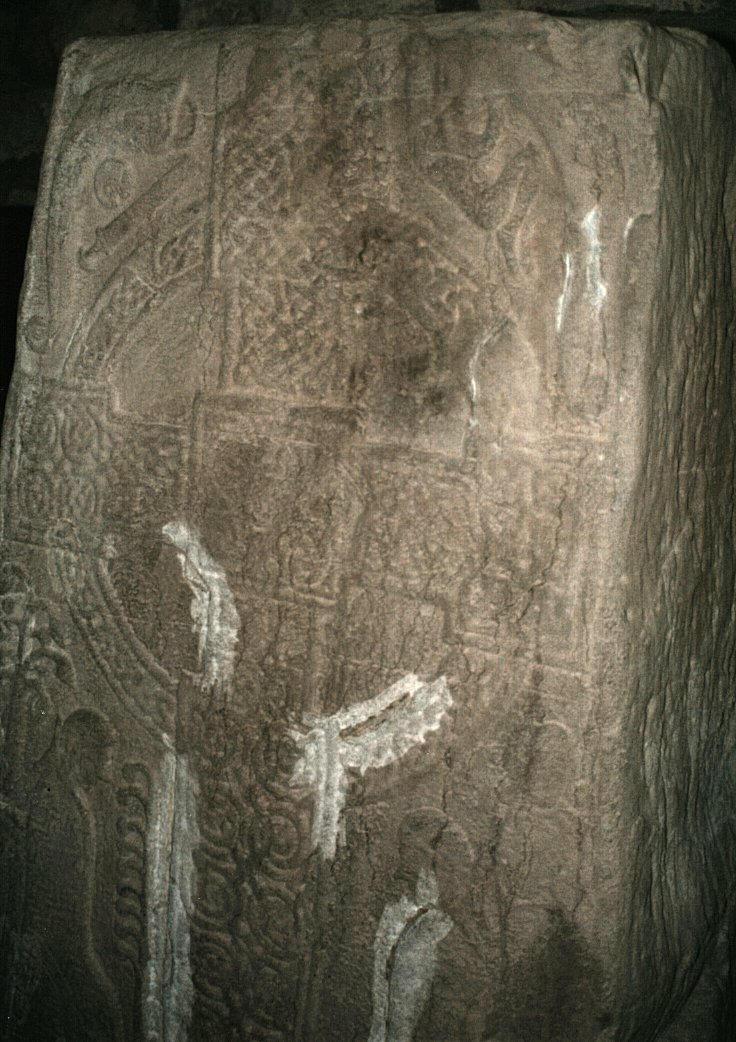
16/22 Detail of the top of the cross. You may notice that the top-right quarter seems to depict someone having their head bitten off by a monster.

17/22 Detail of the base of the cross. The blokes in anoraks are believed to be Pictish computer geeks.

18/22 The class III cross slab.
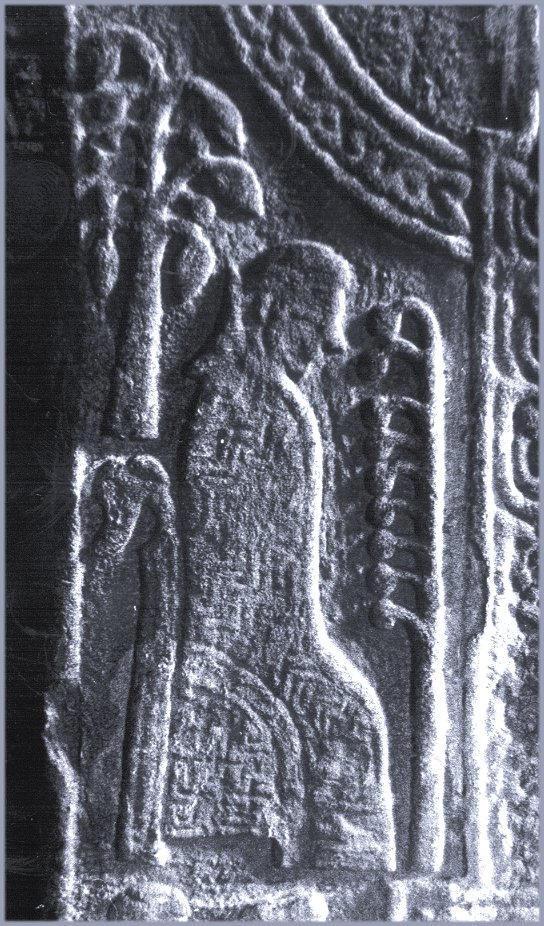
19/22 The hermit Paul and his date trees.

20/22 The man-eating sea monster - possibly <I>Jonah and the Whale</I>.
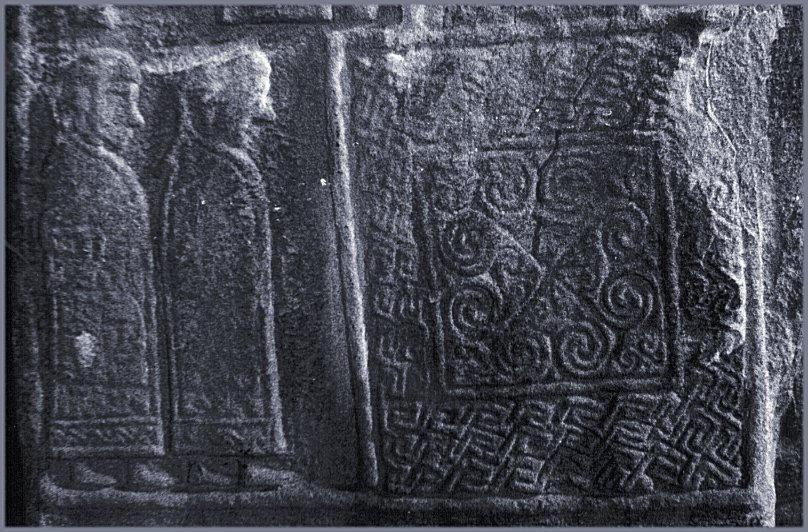
21/22 A pair of tonsured monks and a key-pattern panel.
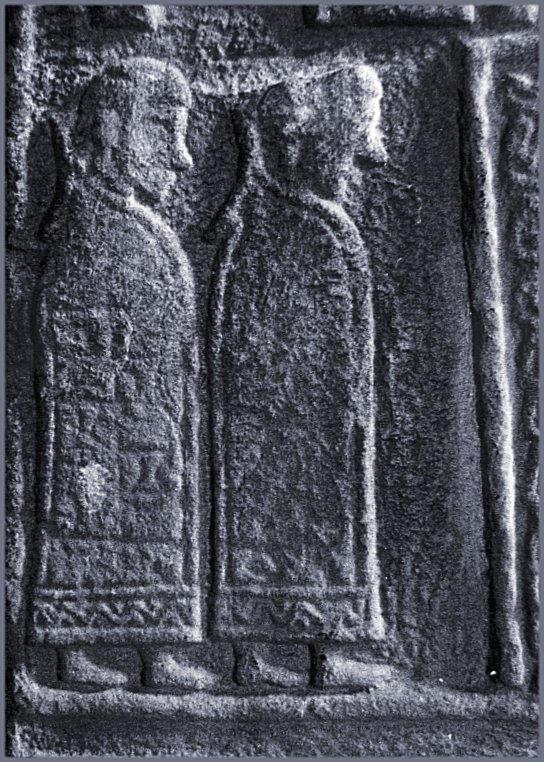
22/22 Detail of the tonsured monks.
Previous
Next





















